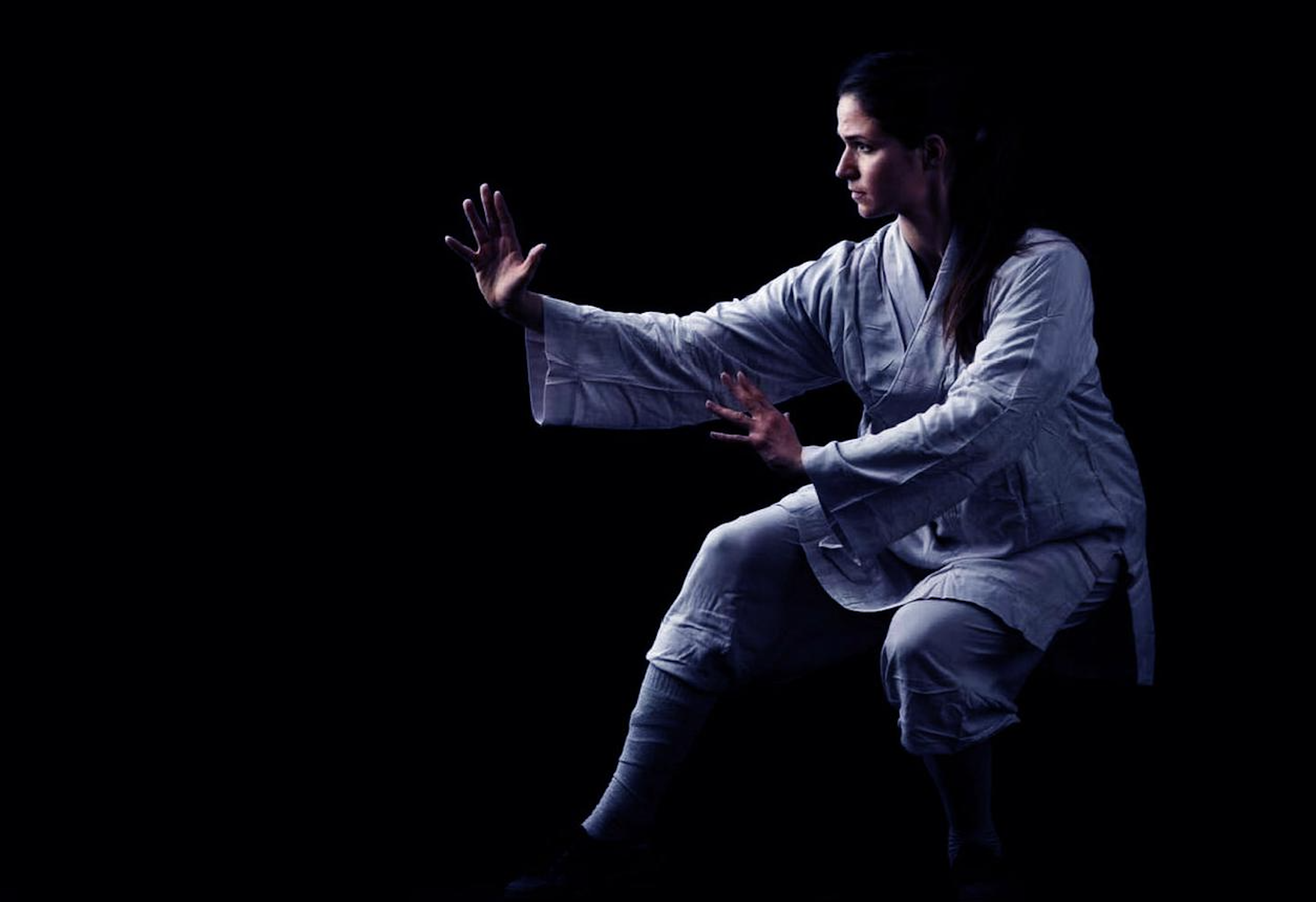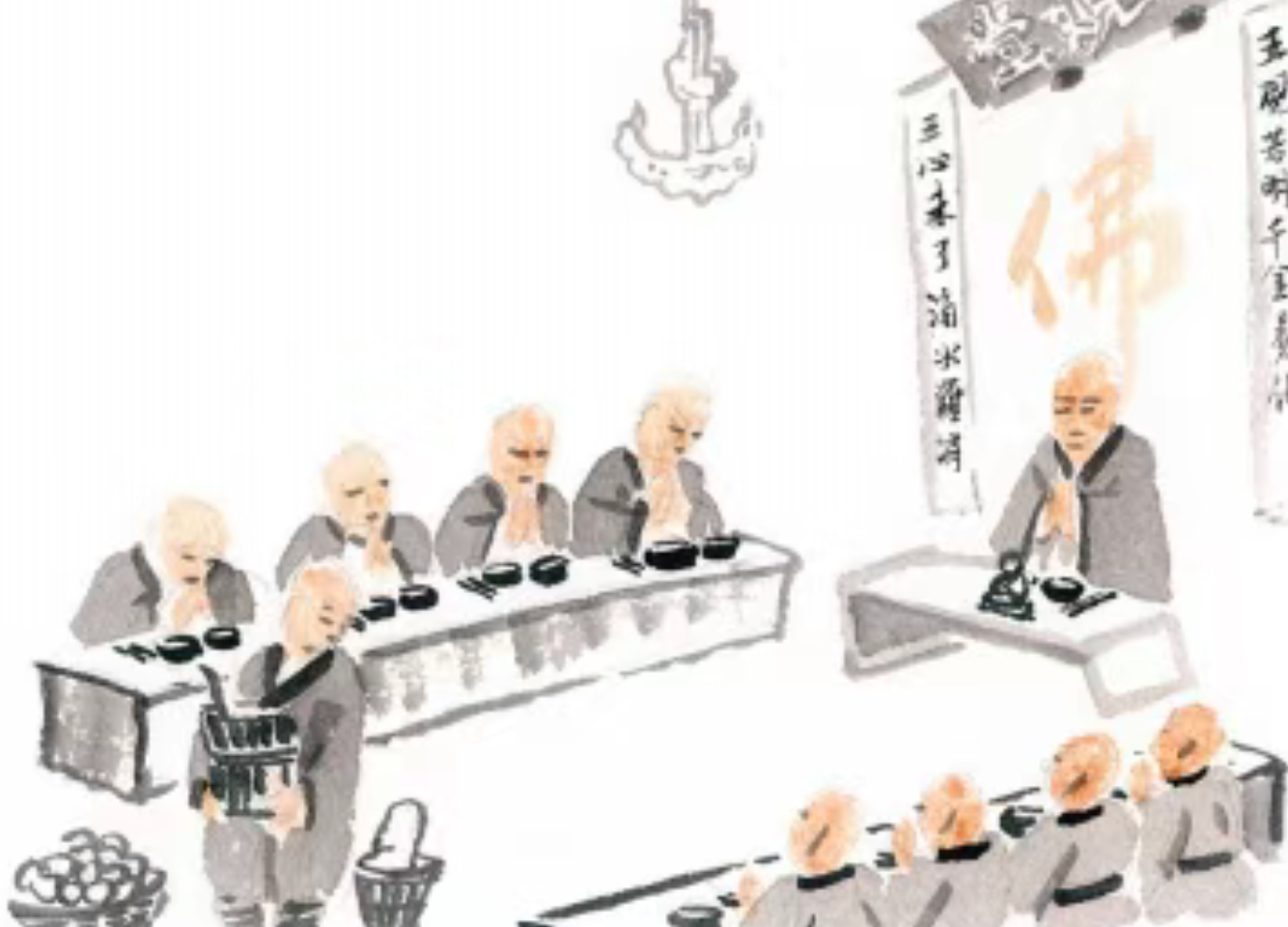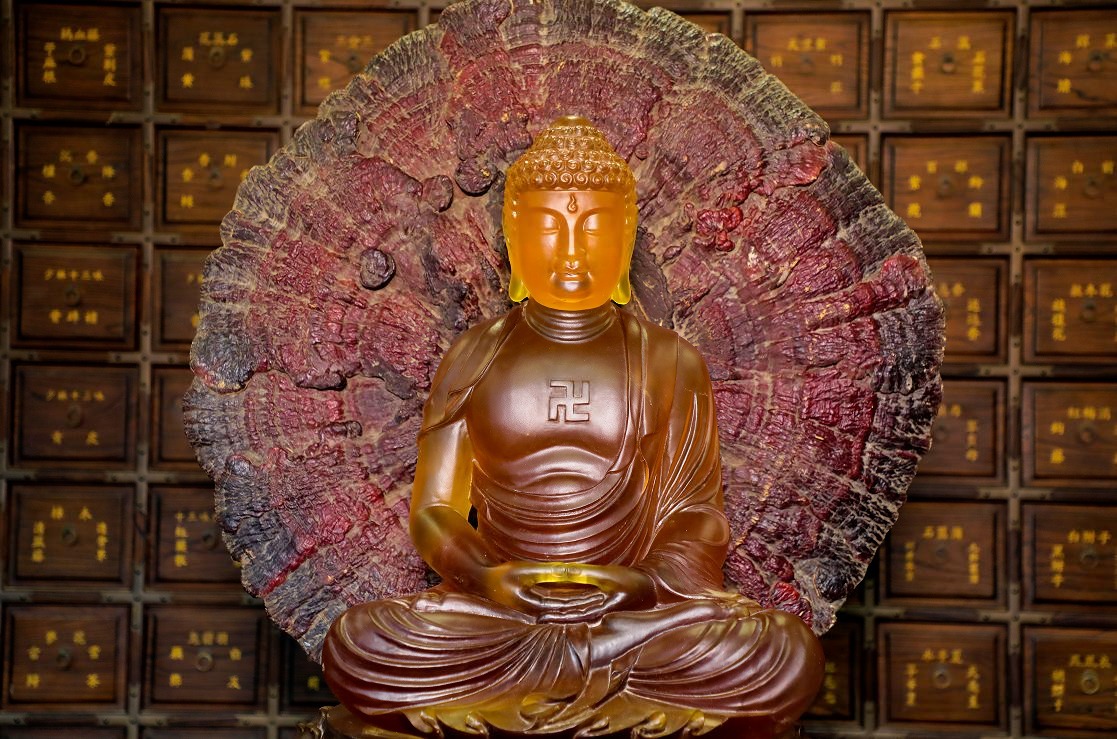In motion, there is stillness; in stillness, there is motion. The forms of fists and feet are manifestations of the mind and echoes of the Dao.
The enduring legacy of Shaolin Temple is not due to the strength of its martial techniques alone, but because every movement is deeply rooted in philosophy and spiritual practice. People often ask: Why do seemingly simple Shaolin movements prove so challenging to master? Why does a single form like “Arhat Subduing Demons” serve both to vanquish foes and to cultivate the mind? This is the fundamental distinction between Shaolin Kung Fu and ordinary combat techniques—each movement embodies a meditative insight, a holistic practice of inner and outer refinement.
Movement Is the Chan Language of the Body
At Shaolin, martial arts are not merely about fighting—they are a path of cultivation. Within every punch and stance lies millennia of wisdom. When Shaolin disciples practice the “horse stance,” it is not solely for stability in movement but for stillness in the heart. When they train the “Vajra Fist,” it is not to defeat enemies but to subdue the ego. As the ancient saying goes: “The fist strikes not apart from the heart; the step moves not apart from the root.” Every movement is not just a technique but a profound attunement of body, emotion, and intention.
Take “One-Finger Zen,” for example—a model of external strength training and internal concentration. It demands unwavering focus and serene qi, enabling the finger to stand firm like a pillar, unshakable as bedrock. That finger is not merely a finger; it is the “mind condensed into a single point, all thoughts unified.” Without inner cultivation, mere physical drilling is an empty shell.
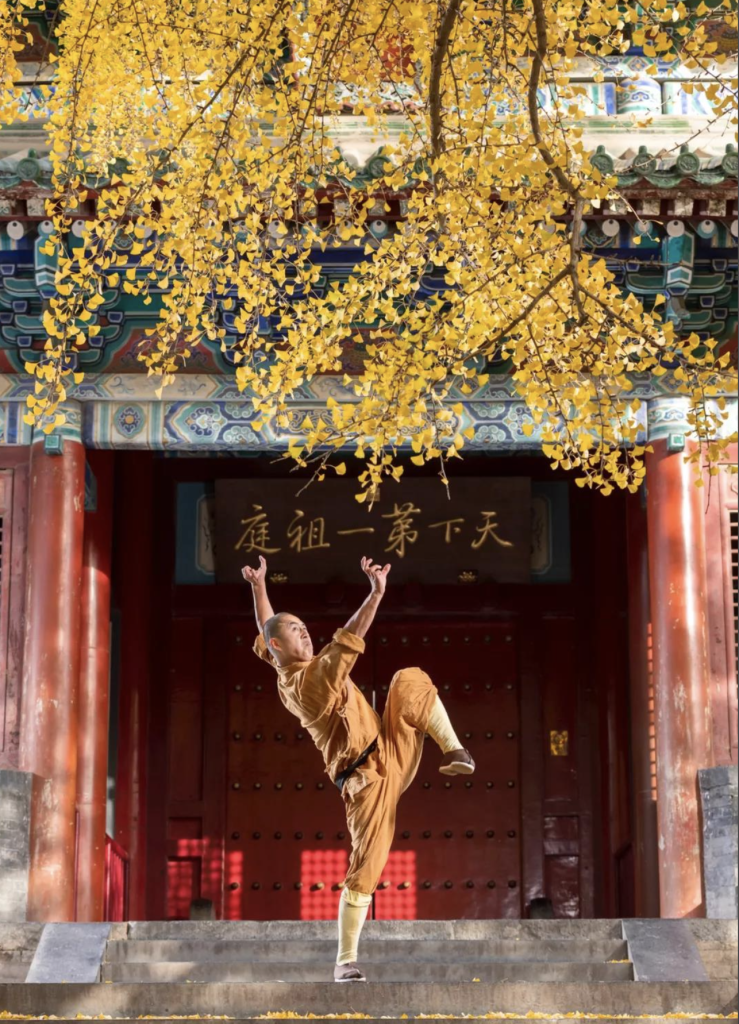
The “Dao” Within Movement Is Realized Through Unity of Body and Mind
Shaolin martial arts emphasize “intention precedes form.” A punch is not driven solely by brute force but by the flow of mindful intent and the guidance of qi. Thus, Shaolin movements often conceal an understanding of the “Dao.”
For instance, “White Crane Spreads Its Wings” appears soft yet contains hardness within, embodying the principles of going with the flow and using stillness to counter movement. Likewise, “Bodhidharma Facing the Wall,” though seemingly a static meditation pose, involves the circulation of inner qi and the return of thought to its source. These movements are not mere techniques but enactments of life’s deeper truths.
This is akin to the serene Zazen Buddha statues often seen at Shaolin Temple—the meditating Buddha seated calmly, unmoving, yet radiating immense presence that stills the heart and focuses the mind. Take, for example, this Zazen Buddha Meditation Statue, whose tranquil expression and stable posture depict not only the Buddha’s meditative state but also the embodied spirit of Shaolin’s Chan and martial unity. Placing it in one’s space serves as a daily silent reminder: amid motion and stillness, the heart remains grounded.
Movement Is a Path of Cultivation, Not a Performance
True Shaolin Kung Fu is a practice of “cultivating with the heart.” Every movement must carry intention, awareness, and grounding. The concept of “sinking the qi to the dantian” is not merely about breath control but a practice of unifying heart and qi, anchoring awareness in the lower abdomen. When executing forms and steps, one must observe not just the outward shape but the inner intent—where does the intent arise? From the heart.
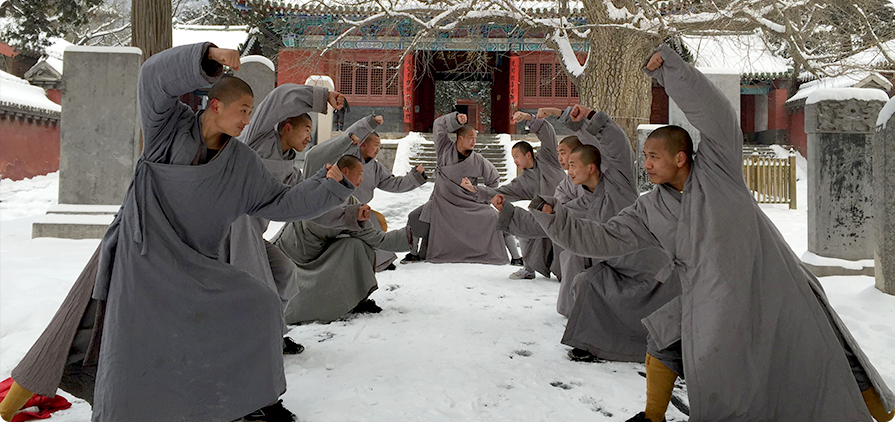
The “Shaolin Staff Technique” includes a move called “Welcoming the Wind, Swaying the Willow,” which may appear as a defensive block but teaches the principle of leveraging force and using softness to overcome hardness. The “Eighteen Arhats Formation,” though a sequence of coordinated postures, embodies collective focus and the merging of energetic fields. These are not mechanical motions but living, breathing expressions. To train them is not merely to strengthen the body but to temper the spirit.
When facing life’s challenges and disturbances, if we can remain as composed and centered as we are in practice, we will naturally navigate all storms. This is the wisdom embedded in Shaolin movements: “To train the fists without training the heart leads only to mundane skill; to train the heart without the fists risks losing form and balance.”
Behind the Movements: Heritage and Enlightenment
Every Shaolin movement is the fruit of cultivation by generations of eminent monks and warrior monks. They originate not only from observations of nature and battlefield experience but also from sudden awakenings to Buddhist truth and the integration of body and mind. Over time, these movements have become a language—expressing an inner order where the body and the heart are inextricably aligned.
As demonstrated by the Zazen Buddha Meditation Statue, it is not merely the depiction of the Buddha in seated meditation, but a symbol of the purity within one’s inner world and an unyielding will. Amid training, if one sits before such a statue, observes its form, and contemplates its meaning, one may come to realize: every movement ultimately leads to a tranquil heart.
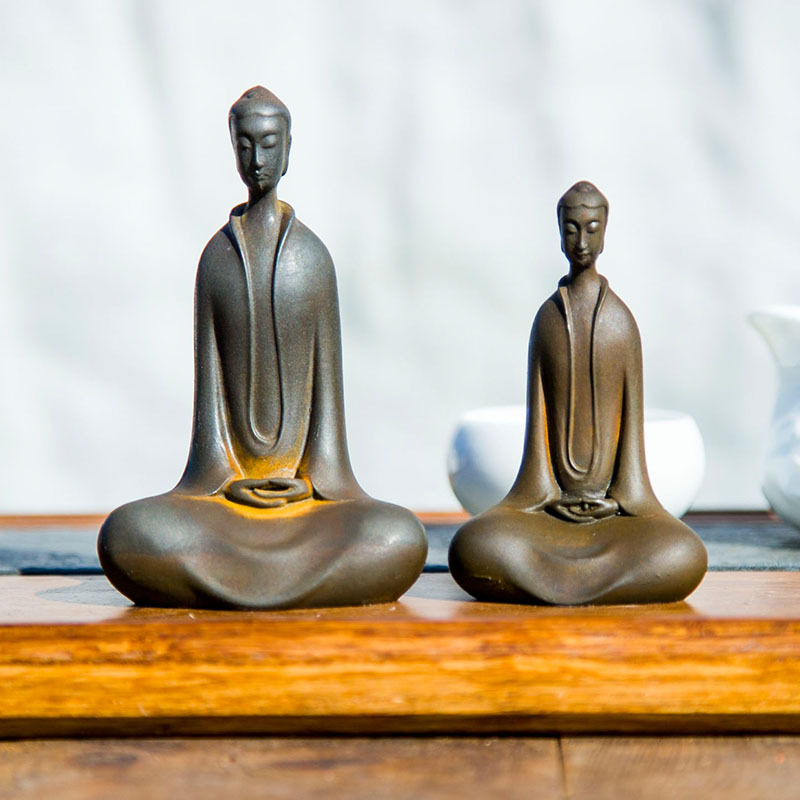
Zen Masterpiece: Handcrafted Shaolin Temple Iron Buddha Statue for Mindful Living
Handcrafted Serenity – Meticulously carved by skilled artisans, showcasing intricate details and a weathered, timeless patina.
Learn About This Shaolin TreasureThe Great Way Is Simple; Forms Are the Dao, and the Enlightened Will Understand
The profound meaning of Shaolin Kung Fu is never superficial. It is a continual return to the original mind. Every punch and palm strike is a dialogue with the self; every horse stance and Zen palm lift is a process of self-discipline and mental purification.
Among the myriad arts of the world, Shaolin stands apart because it elevates “technique” into “the Dao.” What seems like training in forms is, in truth, spiritual practice; what appears as external conditioning is, in essence, inner observation.
”The Chan practitioner seeks stillness within motion; the martial artist uses stillness to counter movement.” To walk the path of the fist is also to walk the path of the Dao. The meanings within Shaolin movements are not for the eyes to see, but for the heart to comprehend.
May every punch we throw allow us to see ourselves, to see heaven and earth, and to see all sentient beings.
